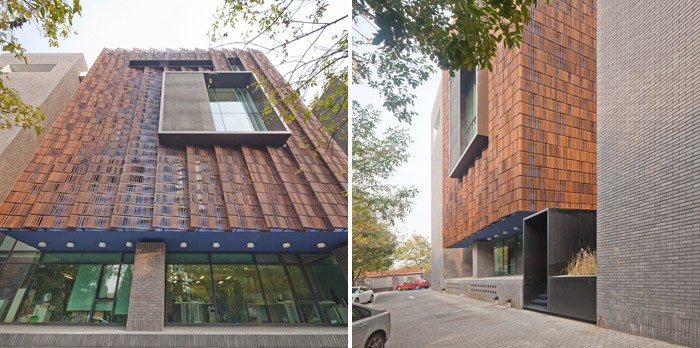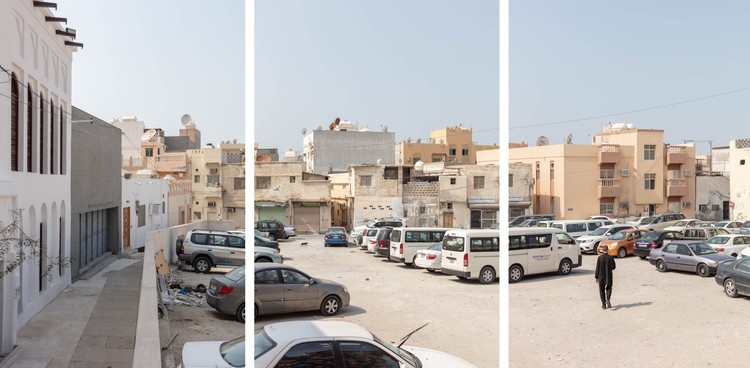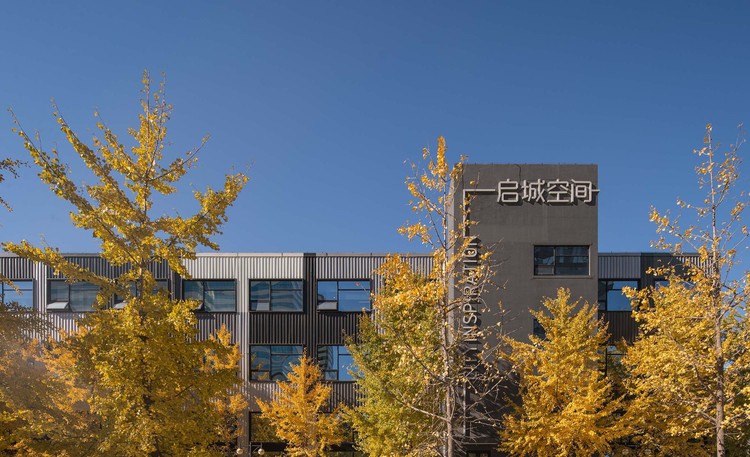Humanidade2012 Carla Juaçaba + Bia Lessa
2014-01-03 01:00
© Leonardo Finotti
莱昂纳多·芬诺蒂


架构师提供的文本描述。我们对这个项目的主要想法是想出一个展览,其中空间和项目是一样的:空间就是展览本身。
Text description provided by the architects. Our main idea with this project was to come up with an exhibition where space and project was one and the same: the space is the exhibition itself.
它需要一个礼堂、会议室、展览空间等等。我们的第一步是将一切转化为信息空间。家具,桌子,墙壁,天花板,地板,椅子,所有传递信息的东西,因为服务和展览空间之间没有分离。
It required an auditorium, meeting rooms, exhibitions spaces, and so on. Our first step was to convert everything into information spaces. Furniture, desks, walls, ceiling, floor, chairs, everything conveying information, as there would be no dissociation between service and exhibitions spaces.
Planta Nível 3
Planta Nível 3










在这些展示不同维度和功能的空间中,我们想强调当代有关人类的问题,以及自工业革命以来人类的活动是如何影响我们今天的世界的(人类世)。这一空间将展示在里约20周年期间讨论的这些和其他主要想法,并揭示巴西可以对这些变化采取行动的方式。
In these spaces showcasing different dimensions and functions, we meant to highlight contemporary issues concerning man and how his activities, since the Industrial revolution, have affected our world today (Anthropocene). The space would showcase these and other main ideas that were discussed during Rio +20, and also expose ways in which Brazil can act on these changes.
我们得到了一个军事基地,一个不稳定的地形。面对里约最著名的两个海滩,伊帕内马和科帕卡巴纳,周围都是生气勃勃的大自然,风刮得很厉害,通常时速120公里(74.6英里/小时)。
We were given a site in a military base, an unstable terrain. Facing two of Rio’s most well-known beaches, Ipanema and Copacabana, and surrounded by exuberant nature, the wind blows harshly, usually at 120km/h (74.6mph)
© Leonardo Finotti
莱昂纳多·芬诺蒂


我们与该网站的第一次接触是在一次促销活动期间(这个空间可供出租,用于许多不同的活动)。当时,他们安装了一个8000平方米(26.2平方英尺)的塑料帐篷,一个坚固的空调和一个250米(820平方英尺)的门廊面向科帕卡巴纳海滩。
Our first contact with the site was during a promotional event (this space is available for rent for many different activities). For the occasion they had installed a 8.000m2 (26.2sqft) plastic tent, with a strong air conditioner and a 250m (820sqft) porch facing Copacabana beach.
我们确信不使用经常用于临时展览(塑料帐篷,爆破)的材料,尽管我们知道这个项目的临时性质。
We were certain about not using materials frequently used for temporary exhibitions (plastic tents, blowups), though we were aware of the provisional character of the project.
© Leonardo Finotti
莱昂纳多·芬诺蒂


这些材料的不实用性从一开始就很明显。我们不能没有微风,景观和场地,工作在另一个空间,可以暴露在任何其他地方,而不是融入其周围的环境。
The impracticability of these materials was obvious straight from the start. We couldn’t do without the breeze, the view and site, to work in just another space that could be exposed anywhere else, not blending in with its surroundings.
© Leonardo Finotti
莱昂纳多·芬诺蒂


我们把可持续性理解为一种利用场地和气候条件的元素的方法。在科帕卡巴纳要塞,我们怎么能从风、海、阳、雨中走出来呢?
We understood sustainability as a way of making use of elements that the site and the climatic conditions presented. How could we turn way from the wind, sea, sun, the rain, ever so present and impressive at the Copacabana Fort?
负责该项目的建筑师卡拉·胡阿·阿巴(Carla Jua ABA)提出了让脚手架裸露的想法,并与周围环境进行了综合。揭露,而不是盾牌。在塑料帐篷中使用的脚手架将被曝光,让景观与空间互动。
Carla Juaçaba, the architect responsible for the project, was the one who came up with the idea of leaving the scaffold structure exposed, creating a synthesis with the surroundings. To reveal, not shield. Scaffolds that were being used in plastic tents, would be brought to light allowing the landscape to interact with(in) the space.
我们可以用那里的材料,至少一部分。这一切在工作开始时就已经解决了。然后我们考虑把传统的展览空间和房间从地面上解放出来。这些空间将通过“坡道”进入。在底层,这种结构会传递通往大海的隧道。微风会自然地感觉到,因为隧道不会穿过它们。
We could use the material that was there, at least part of it. This was all settled at the beginning of the work. We then thought of freeing the conventional exhibition spaces and rooms from the ground. The spaces would be accessed by “ramps”. On the ground floor the structure would convey tunnels that lead all the way to the sea. The breeze would be felt naturally, as the tunnels wouldn’t cut through them.
© Leonardo Finotti
莱昂纳多·芬诺蒂


花园将沿着这些大厅种植,成为“展览馆”本身。这是建立空间和信息之间的综合关系的开始时刻。这个花园将代表丰富的植物在不同的生物群落,并将自己的内部和外面的结构。这些脚手架突出了它作为支撑结构的全部潜力,透明,并通过它越来越小的空洞传递一种舒适的感觉。要进入房间,将有一些小坡道不需要任何额外的努力,以使访问可以享受迅速。
Gardens would be planted along these halls, becoming “exhibition halls” themselves. This is the start off moment when the synthesis between space and information is established. This garden would represent the abundance of flora in different biomes and would spread itself within and out of the structure. The scaffolds highlight its full potential as structure of support, transparency and transmits a cozy feeling, through its bigger and smaller voids. To access the rooms there’d be minor ramps not requiring any extra effort, so that the visits can be enjoyed swiftly.
© Leonardo Finotti
莱昂纳多·芬诺蒂


这些房间将成为反思的空间、内部搜索的空间、封闭的空间、有时与周围自然隔绝的空间-这是对个人和亲密反思的邀请。在一些房间里,我们会利用风和自然光作为展览本身的要素,而在另一些房间,我们需要对光线和温度的绝对控制。
The rooms would serve as spaces for reflection, of inner search, closed, shielded at times from the nature surrounding it – an invitation for a personal and intimate reflection. In some rooms we’d take advantage of the wind and natural light as elements of the exhibition itself, while in others we would need the absolute control of light and temperature.
我们想清楚地指出,考虑到人类和自然(保护/保护)的成果,技术和其他成就的使用不应被抛弃,而应在必要时有意识地自由判断。这并不意味着我们否认我们的意识形态,创造一个可持续的空间。
We wanted to state clearly that the use of technology and other of man’s achievements given his and nature’s (protection/conservation) shouldn’t be discarded, but used consciously when necessary, judgment free. This doesn’t mean we are denying our ideology, creating a sustainable space.
© Leonardo Finotti
莱昂纳多·芬诺蒂


房间之间会有相当大的距离,所以当参观者能够体验到内外的反差,并在这种矛盾中自娱自乐时。外面的世界,天气,自然和大都市。里面有一次去游客私人世界的旅行。他与展览信息的互动是主观的、个性化的。
The rooms would be considerably apart from one another, so when the visitor can experience the inside/outside contrast, and delight himself in this contradiction. Out there the world, the weather, nature and the grand Metropolis. Inside, a trip to the visitor’s private world. His interaction with the exhibition information is subjective, individual.
我们希望景观和天气的介入被用作展览材料,例如文字、雕塑、图纸、机器等。根据建筑物的高度,大都市似乎越来越远。大都会本身就是展览本身,从不同的角度和角度来看,都是被暴露出来的。“这座城市”曾经被巴西建筑师保罗·门德斯·达·罗查定义为“人类最大的发明”。科帕卡巴纳面临的空间的墙壁将被做成“铅墙”,展示关于不同内容的信息,从而与里约热内卢人口密度最高的地区直接建立联系。具体的独白。
We wanted the intervention of the view and weather to be used as exhibition materials, insomuch as the texts, sculptures, drawings, machines, etc. The metropolis would seem farther and farther away depending on the height of the building. The metropolis is the exhibit itself, exposed, seen from different angles and perspectives. “The city”, as once defined by the Brazilian architect, Paulo Mendes da Rocha, “is the biggest human invention”. The walls of the spaces facing Copacabana would be made into “led walls” exposing information on different contents, establishing, this way, an immediate connection with the district, titleholder of the highest population density of Rio de Janeiro. A concrete soliloquy.
© Leonardo Finotti
莱昂纳多·芬诺蒂




































































Architects Carla Juaçaba, Bia Lessa
Location Forte de Copacabana - Copacabana, Rio de Janeiro - RJ, Brasil
Category Temporal Installations
Project Direction Bia Lessa
Architecture Carla Juaçaba
Team Antonio Pedro Coutinho, Pedro Varella, Sergio García–Gasco Lominchar, Elza Burgos de La Prida, Argus Caruso
Architects / Interns Daniel Cochicho / Rita D’aguilar, Barbara Cutlak e Alvaro Pitas
Project Year 2012
Photography Leonardo Finotti, Courtesy of Carla Juaçaba + Bia Lessa
























